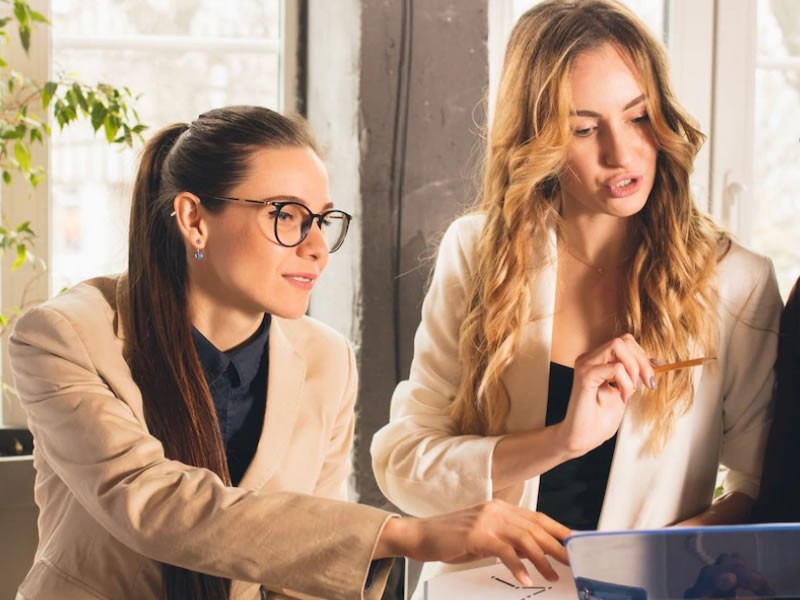Insight Blog
Agility’s perspectives on transforming the employee's experience throughout remote transformation using connected enterprise tools.
8 minutes reading time
(1627 words)
Empowerment Triangle Model – UPDATED 2022 – A Complete Guide
Empowerment Triangle Model is a model that offers a new language; a new way of thinking. Here is a fresh perspectives and options for responding differently.
All of us have the potential to fall prey to unhealthy and disempowering dynamics and patterns that we were exposed to as children. Karpman found a link between the unhealthy role-switching that people engaged in and their sense of personal responsibility and power in conflicts. He coined the term "drama or victim triangle" when he mapped out relationship dramas and conflicts.
What is Empowerment Triangle?
Self-awareness is a prerequisite for effective leadership. Recognizing which side of the debate you are on and then making responsible decisions based on that knowledge. It's your choice whether you want to live and lead from a place of the drama below the line, or a place of empowerment above the line.
You've learned how to tell when someone is in the middle of a scuffle and how to avoid it. Drama is characterized by a feeling of inadequacy. To be powerless is to slip into the Victim, Villain, or Hero mindsets. Your powerlessness is the same no matter what form it takes. You'll be there for a long time.
The belief that we are all blessed is the foundation of the Empowerment Triangle. As a result of the Empowerment Triangle, we are able to take ownership of our own and others' potential. Think of a "right-side-up" triangle.
The letter "C" appears at each corner of the triangle. Assume the roles of the creator at the apex, challenger at the lower right corner, and coach at the lower-left corner of the grid. These roles are not to be confused with the divisive Dreaded Drama Triangle.
The person who focuses on creating
The Creator does not take a passive role in the affairs of this world. They reject a "life happens to" them mentality. Instead, they empower themselves by taking responsibility for their own decisions and actively engaging in their lives.
They refuse to accept their plight as helpless. People are aware that they are in charge of their own future. More than anything else, creators want to transform themselves and the world around them. They aspire to be in more fulfilling partnerships.
They're looking to pay off their debts. They'd like to slim down. They're trying to improve their relationship. Their job is to take the next generation to the next level, so they look back at their family's history. They may be a first-generation college student, but they're building a future that's far more significant than their own history could have imagined.
Empowerment education is based on the premise that power belongs to the individual, not to the man or the system as a whole. However, you. As creators, we are led. We've got our feet firmly planted. And we have been blessed.
The person who takes the role of a coach
If you're more of a Rescuer than a Coach, it's time to change your perspective. It is the Coach's job to help, guide, and instruct the Creators without trying to rescue them. In the minds of artists, coaches draw out the gold and encourage them to think for themselves.
The Coach's role is to help the Creator, not to receive praise or recognition, like the Rescuer. Coaches are role models because they set clear expectations and model good behavior.
With this accountability, coaches can support their clients and help them achieve their goals. In the Coach-Creator relationship, we know that we can't accomplish our goals alone. We can't get where we want to go on our own; we need help from others.
The person who takes the role of a challenger
The Persecutor's becomes the Challenger. Although the Challenger is empathetic to others, they are willing to take a stand if they see a problem that needs to be solved or addressed.
It is the job of the Challenger to encourage others to examine their own thoughts and actions to see if there are any negative patterns that should be changed.
The Challenger's goal is to find out what works and what doesn't in a process in order to improve it. The Challenger is committed to bringing about positive change in a way that benefits all those involved.
What is Empowerment Triangle Model?
Dr. Stephen Karpman first described the Dreaded Drama Triangle in the 1960s as a toxic interplay between three distinct roles: persecutor, victim, and rescuer.
The victim occupies a central position in the DDT plot. During the Victim role, you may feel as if you have no control over what others do or say to you. It can feel like you're being attacked at times, but most of the time it's just a challenge.
It's possible you're feeling powerless and/or mistreated. DDT's victim role has an antidote in Empowerment Triangle Model, named "creator".
The second role is that of the abuser or perpetrator. The Victim's woes are attributed to the Persecutor. The DDT's Persecutor role is replaced in Empowerment Triangle Model by the Challenger role.
Lastly, the Rescuer intervenes to save the victim from harm done to him or her by the Persecutor. To reinforce their victim mindset, even if Rescuers have good motives, their actions absolve the Victim of any responsibility. DDT's "rescuer" role is replaced in Empowerment Triangle Model by the "coach" role.
Drama Triangle vs Empower Triangle
Drama Triangle Empower Triangle
There is a relationship model known as the "Dramatic Triangle" that depicts the three characteristics of unhealthy, overly emotional, and potentially toxic relationships. The victim, Persecutor, and the Rescuer are all involved in this story (PRV).
Conflicted relationships can be avoided if people in those three roles use the Triangle to their advantage. They're able to do this because they're aware of the roles themselves, as well as the roles they play within the triangle.
Stephen B. Karpman proposed a social interaction model called the Karpman drama triangle. An example of the destructive interactions that can occur when people are at odds is depicted in the triangle. This model is used in psychotherapy, particularly transactional analysis, and is referred to as the "drama triangle."
The Drama Triangle, according to our understanding, is a model that helps us better understand social interaction at the outset.
In the second place, it can be used to examine our own relationships and see if they are toxic or not. Determine whether our relationships are based on reaction and not empowerment. An outline of where we are so we can determine where we want to go.
Empowerment Triangle
It takes 'putting your big boy pants on' to get out of a drama triangle. Putting on a brave face. A leader who sets an example. Both flight and fight are bad options, but the middle path is the best one for everyone involved, even if doing the right thing is uncomfortable at first.
One of these roles requires a great deal of self-awareness. The key is to move to the 'Empowerment Triangle'.
Drama occurs in the Drama Triangle, while empowerment takes place in the Empowerment Triangle. From being sucked into it all to taking ownership of your part in it, here's how to get out.
All three roles can leave the triangle if just one person "wakes up" from it. Even if the victim wakes up, the one-down role is the most difficult to escape from.
One person has the power to break the triangle because it is similar to the story of Batman and the Joker. So that Batman can be a superhero, the Joker is required. In the absence of him, there is no purpose for him
Different roles in Dreaded Drama Triangle
The persecutor and victim can switch roles very quickly, e.g. the victim can lash out and become the persecutor or the persecutor can suddenly collapse into the 'poor me' victim.
As a result of these roles, we avoid taking personal responsibility and confronting our own fears and wounds. As a way to gain power when one has lost their inner power and/or has never learned how to become self-empowered, these roles can be utilized.
The victim, persecutor, or martyr role can all be played out in our own minds, for example, by feeling sorry for ourselves.
If this triad is playing out fully within or we are habituated into one role, the world will mirror our inner world and attract the facets of the triangle, proving our justified role in the universe.
Empowerment Triangle Worksheet
The way we deal with conflict and whether or not we resort to drama as a means of resolving it is heavily influenced by our upbringing and the environment we grow up in.
In the absence of self-awareness, we may fail to see the long-term consequences of staying in the triangle and the negative impact it has on our health and happiness.
The first step in improving anything is acknowledging the problem and accepting responsibility for your actions. Accepting responsibility for your own actions can help you see the world from a different perspective, changing the way you see things, how you see other people, how you think, and how and why you react.
We can allow our minds to make new connections and discover new realities simply by being more open. Just reflect on the last few interactions that have left you feeling down or enraged or confused or afraid or powerless or frightened or whatever it is you're feeling right now.
In order to figure out which role you would play in the drama triangle, act out the conversation. As a victim, rescuer, or persecutor, how did others respond to your story?
Categories
Blog
(2636)
Business Management
(325)
Employee Engagement
(212)
Digital Transformation
(176)
Growth
(120)
Intranets
(119)
Remote Work
(61)
Sales
(48)
Collaboration
(36)
Culture
(29)
Project management
(29)
Customer Experience
(26)
Knowledge Management
(21)
Leadership
(20)
Comparisons
(6)
News
(1)
Ready to learn more? 👍
One platform to optimize, manage and track all of your teams. Your new digital workplace is a click away. 🚀
Free for 14 days, no credit card required.

















